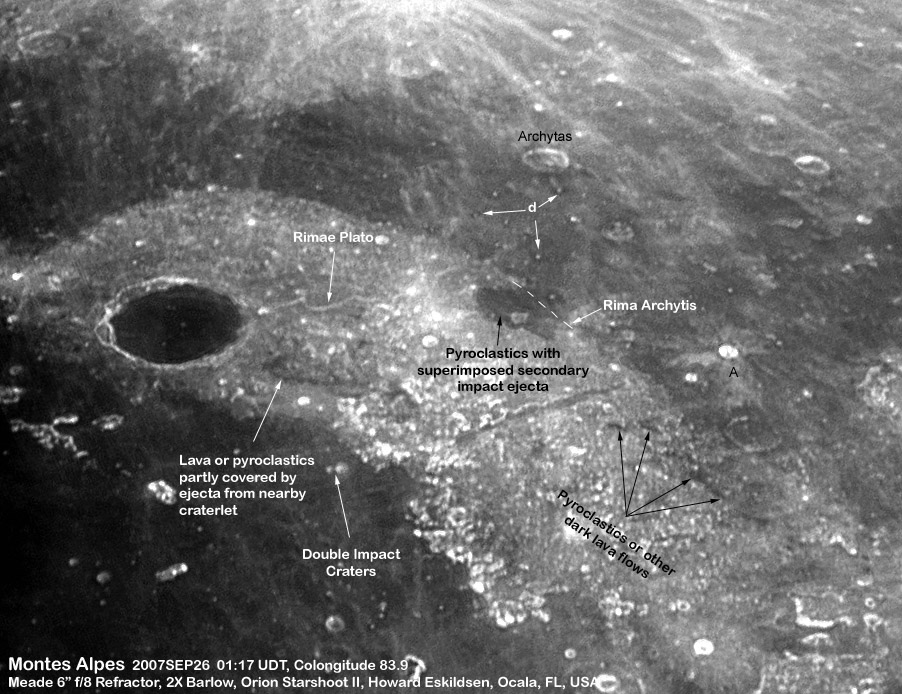
image by Howard Eskildsen, Ocala, Florida
Earlier this week LPOD featured an amazing image by Wes Higgins of the lunar Alps region, centered on the Alpine Valley. I speculated that some areas might be pyroclastic deposits but it required high Sun views to look for the characteristic low albedo (dark areas). So Howard captured the general area at full Moon, allowing us to compare with Wes’ image. Howard has indicated a number of features of interest. First, at upper left, is the biggest of the Plato rilles, well shown by the light reflected from its relatively steep wall. Its also clearly visible along the top of Wes’ image. Howard also marked some sinuous dark lanes within the mottled ejecta from the formation of the Imbrium Basin. These partially coincide with the smaller sinuous rilles between Plato and the Alpine Valley, and to other smooth areas in the ejecta. These lanes are probably lava flows and perhaps some pyroclastics too. Dark halo craters (d) occur just south of Archytas on Mare Frigoris. These bring up dark mare from beneath the multiple rays that dust this area. Note also the rays from the fresh crater Egede A (A) - they have a V-shaped zone of exclusion pointing eastward. This then is another crater formed by an oblique impact. The most perplexing feature on Howard’s image is of the slightly diverging wide zone of rays that cross Mare Frigoris, apparently radiating from Plato. This isn’t visible on plate AII of the Consolidated Lunar Atlas, so it needs to be confirmed elsewhere. But what can it be? Plato does not have rays, centainly none young enough to cover Mare Frigoris.
Technical Details:
September 26, 2007, 01:17 UDT. Meade 6″ f/8 refractor + 2X barlow + Orion Star Shoot II webcam.
Related Links:
Rükl plates 3, 4 & 5
LPOD earns a commision when you buy ANY book from Amazon thru LPOD Have you bought a book lately?
COMMENTS?
Click on this icon File:PostIcon.jpg at the upper right to post a comment.



